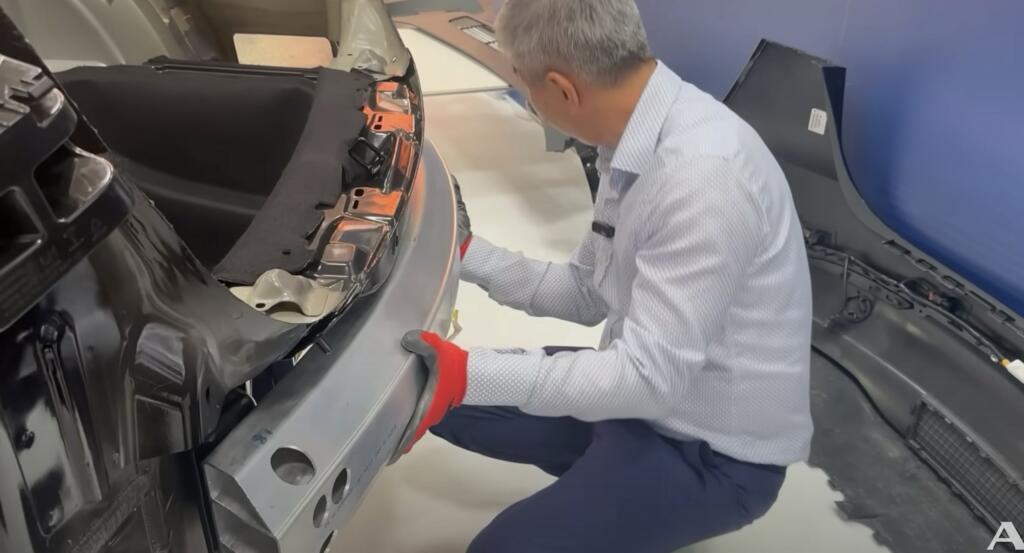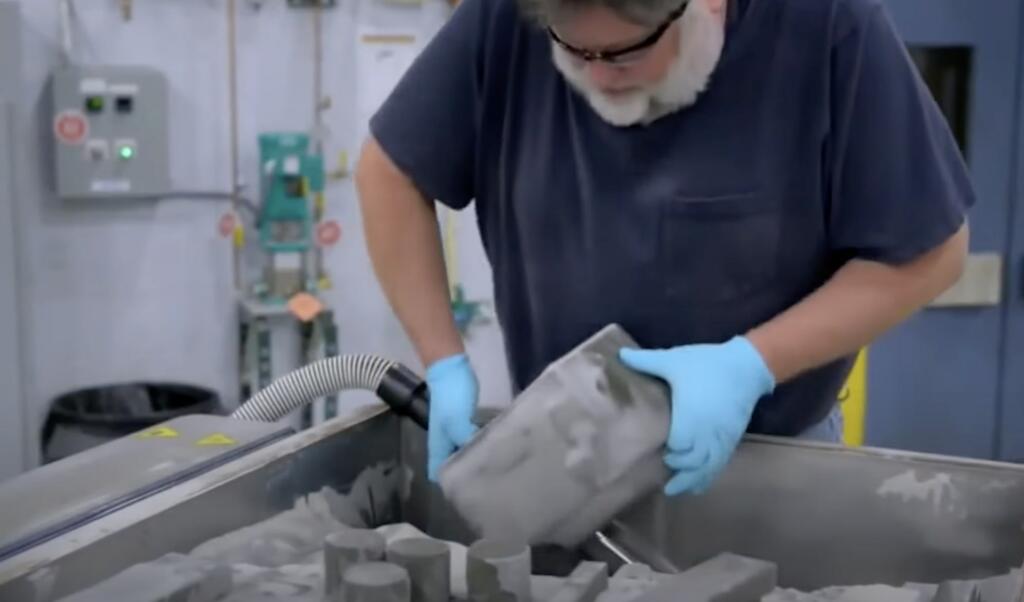Reuters reports that Tesla has combined a series of innovations to make a technological breakthrough for single casting of the complex underbody of the car. Tesla already can gigacast the front and the rear of its cars. This would mean a further reduction in parts and complexity. This will enable faster and cheaper car production and will reduce the factory space needed for car manufacturing.
Tesla is making progress to snapping together just a few major sub-pieces of the car. They already have front and rear casting which removed ove a thousand parts and hundreds of robots. They will soon cast the complex underbody. A video shows how they already can easily snap together major pieces like the bumper and trunk parts. The goal will be like maybe a few dozen pieces snapping together like giant legos. Those giant legos will be snapped together by humanoid robots.
Tesla will be able to die cast nearly all the complex underbody of an EV in one piece, rather than about 400 parts in a conventional car. The know-how is core to Tesla’s “unboxed” manufacturing strategy unveiled by Chief Executive Musk in March, a linchpin of his plan to churn out tens of millions of cheaper EVs in the coming decade, and still make a profit, the sources said.
The unboxed model involves producing large sub-assemblies of a car at the same time and then snapping them together.
Three major body sections will enable Tesla to develop a car from the ground up in 18 to 24 months, while most carmakers can currently take anywhere from three to four years.
The unboxed process will be very easy to adapt for humanoid robot Teslabot to replace human workers.
Tesla cars already can mostly snap together as shown by Autoline.

3D Printing and Sand
The breakthrough Tesla has made centers on the how the giant molds for such a large part are designed and tested for mass production, and how casts can incorporate hollow subframes with internal ribs to cut weight and boost crashworthiness.
In both cases the innovations, developed by design and casting specialists in Britain, Germany, Japan and the United States, involve 3D printing and industrial sand, the five people said.
To overcome the obstacles, Tesla turned to firms that make test molds out of industrial sand with 3D printers. Using a digital design file, printers known as binder jets deposit a liquid binding agent onto a thin layer of sand and gradually build a mold, layer by layer, that can die cast molten alloys.

The cost of the design validation process with sand casting, even with multiple versions, is minimal – just 3% of doing the same with a metal prototype.
Tesla can make the complex molds with industrial sand and then cast the complex underbody with molten metal alloy.


Brian Wang is a Futurist Thought Leader and a popular Science blogger with 1 million readers per month. His blog Nextbigfuture.com is ranked #1 Science News Blog. It covers many disruptive technology and trends including Space, Robotics, Artificial Intelligence, Medicine, Anti-aging Biotechnology, and Nanotechnology.
Known for identifying cutting edge technologies, he is currently a Co-Founder of a startup and fundraiser for high potential early-stage companies. He is the Head of Research for Allocations for deep technology investments and an Angel Investor at Space Angels.
A frequent speaker at corporations, he has been a TEDx speaker, a Singularity University speaker and guest at numerous interviews for radio and podcasts. He is open to public speaking and advising engagements.


Maybe they could take over from TOMY and make a good die-cast USS ENTERPRISE.
This means the body must be replaced with the slightest damage. Very expensive.
Sandy Munro and Munro Associates (car teardown and analysis) said any impact sufficient to make a gigacasting a writeoff would be an accident that also totaled a regular car. Minor damage to a gigacasting – the aluminum can be cut by a body shop and a replacement part can be welded into replace it. There are standardized areas to cut out particular corner sections for replacement. Tesla is responsible for repairs – so they have determined what is worth repairing. The front gigacasting has crushcans and other parts that are designed to collapse in a severe accident and to be replaced. Those crushable areas are to prevent the gigacasting from being damaged while protecting the occupant.
Hi… Just found your excellent site via your appearance on “Brighter with Herbert.” Is there a notification link to be alerted to new content? Thanks Much!!!
3d printing the molds will allow a VERY agile and speedy iterative design process.
you won’t have to spend weeks machining massive pieces of steel for aluminum injection (never mind shipping times!) nor adjusting similar steel stamping dies and numerous robots in order to fix a problem or improve the design.
But I’m curious about the speed of the printing of the casting mold, how much slower is it over previous sand casting methods, or has there been a miracle and it’s become faster?